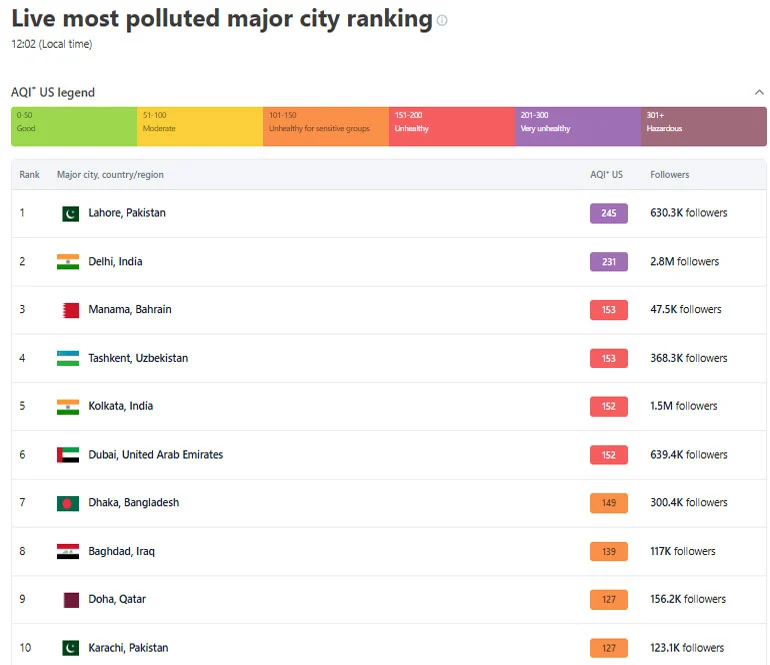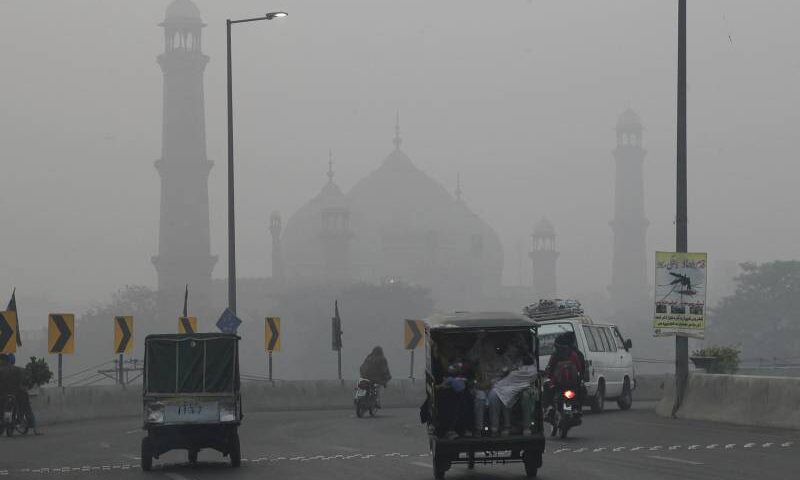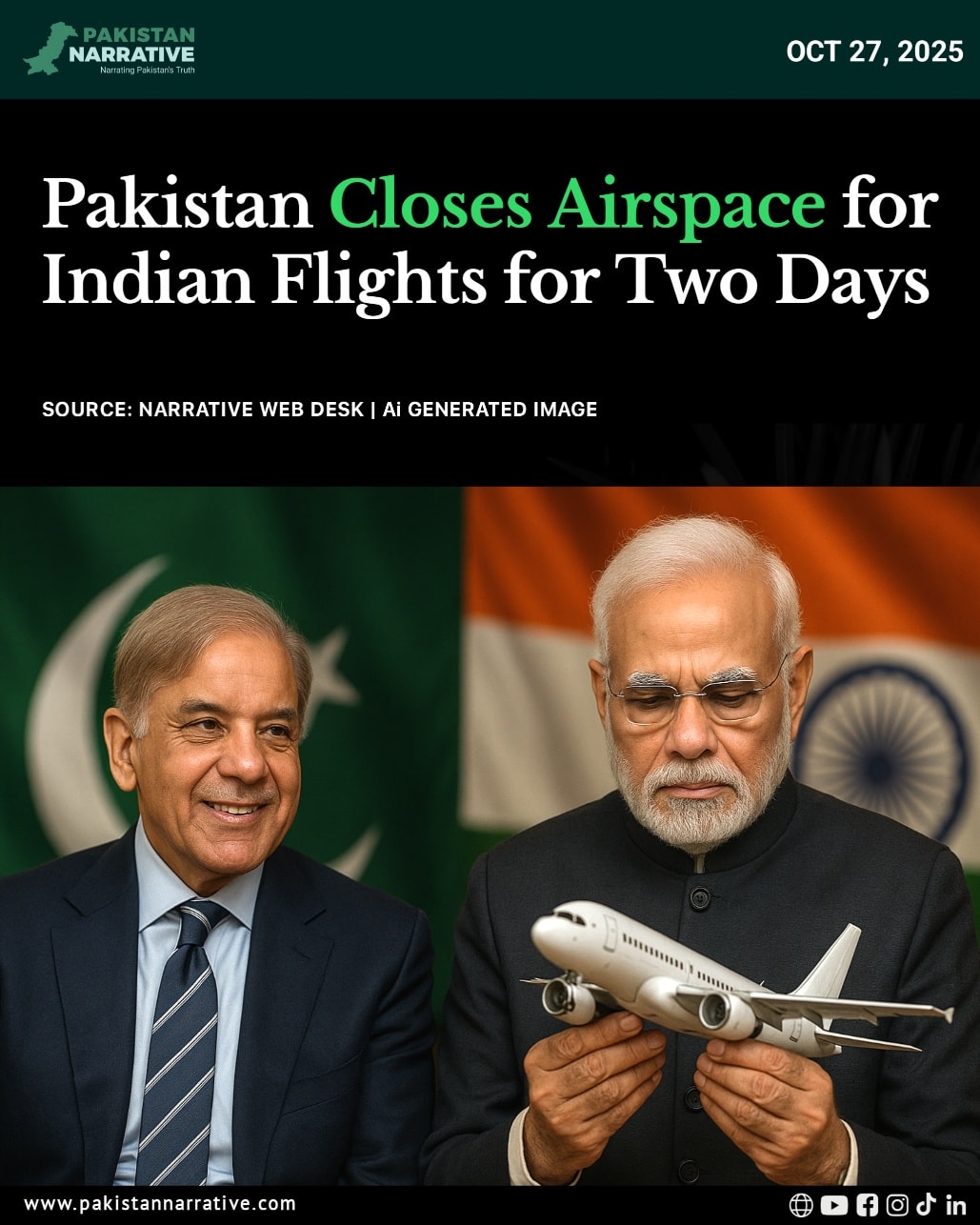Lahore once again ranked as the world’s most polluted city on Monday, as dense smog continued to blanket the provincial capital and its surrounding areas, severely affecting visibility and air quality.
According to global air quality monitoring platform IQAir, Lahore recorded a hazardous Air Quality Index (AQI) of 308 around 6 a.m., later dropping slightly to 245 by noon — still categorized as “very unhealthy.” The city’s PM2.5 concentration reached 148 µg/m³, nearly 30 times higher than the World Health Organisation’s annual guideline value.
The toxic haze has persisted for several days, prompting widespread complaints of throat irritation, breathing difficulties, and itchy eyes among residents. Public health experts have urged citizens to limit outdoor activities and wear protective masks when necessary.
In response to the deteriorating air conditions, the Punjab School Education Department revised school timings across the province. As per the new schedule, classes will run from 8:45 a.m. to 1:30 p.m. Monday through Thursday, and until 12:30 p.m. on Fridays. The decision was announced by Education Minister Rana Sikandar Hayat on his official X account late Sunday.

Meanwhile, Karachi also experienced poor air quality, recording a US AQI of 127, categorized as unhealthy for sensitive groups. The coastal city’s PM2.5 concentration stood at 45.9 µg/m³, over nine times the WHO’s safe limit.
Across the border, New Delhi ranked second on the list of the most polluted cities, with an AQI of 221, also deemed very unhealthy. The Indian capital continues to struggle with emissions from vehicles, industries, and post-harvest stubble burning in nearby states.
Environmental experts warn that every winter, much of South Asia faces worsening air pollution as cold temperatures, stagnant winds, and industrial emissions trap fine particles close to the surface. Prolonged exposure to such conditions, they caution, can lead to serious health issues, including stroke, heart disease, and chronic respiratory illnesses.
The smog crisis continues to raise concerns over public health and urban planning, as both Pakistan and India grapple with the growing challenge of clean air amid rapid urbanization and industrial activity.





